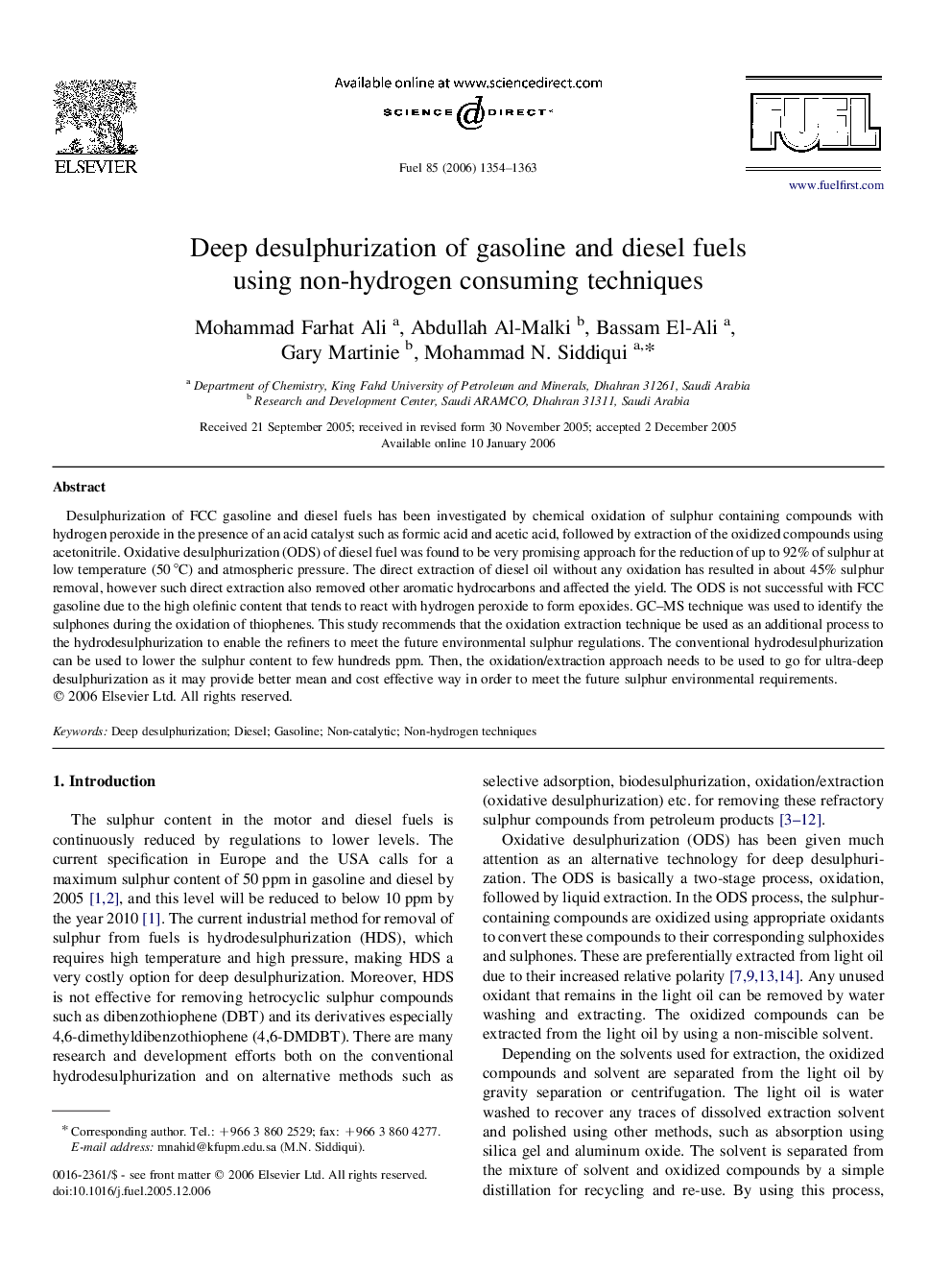| Article ID | Journal | Published Year | Pages | File Type |
|---|---|---|---|---|
| 208551 | Fuel | 2006 | 10 Pages |
Desulphurization of FCC gasoline and diesel fuels has been investigated by chemical oxidation of sulphur containing compounds with hydrogen peroxide in the presence of an acid catalyst such as formic acid and acetic acid, followed by extraction of the oxidized compounds using acetonitrile. Oxidative desulphurization (ODS) of diesel fuel was found to be very promising approach for the reduction of up to 92% of sulphur at low temperature (50 °C) and atmospheric pressure. The direct extraction of diesel oil without any oxidation has resulted in about 45% sulphur removal, however such direct extraction also removed other aromatic hydrocarbons and affected the yield. The ODS is not successful with FCC gasoline due to the high olefinic content that tends to react with hydrogen peroxide to form epoxides. GC–MS technique was used to identify the sulphones during the oxidation of thiophenes. This study recommends that the oxidation extraction technique be used as an additional process to the hydrodesulphurization to enable the refiners to meet the future environmental sulphur regulations. The conventional hydrodesulphurization can be used to lower the sulphur content to few hundreds ppm. Then, the oxidation/extraction approach needs to be used to go for ultra-deep desulphurization as it may provide better mean and cost effective way in order to meet the future sulphur environmental requirements.
